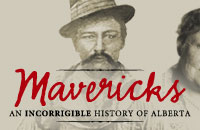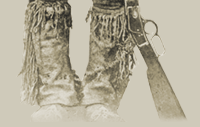|

[ Project Plans | Essential
Questions | Knowledge Hunt | Glossary | Links ]
Disenfranchised – The Famous Five
Informing Others about the Historical Plight of the Disenfranchised
and Promoting Equality
Introduction
Students need to understand how the democratic process has changed
and developed over time since it began in Ancient Greece, and how
it is a relatively new idea for women to have the right to vote
or even own property. Who were the Famous Five? How did they identify
the need for change in Canadian laws? How did the changes brought
on by their actions affect individual rights in Canada? Who are
the "disenfranchised" in our society and in our world?
What actions could you take to help them? What if these laws had
never been changed? Are there still countries with laws like that
today?
Project Explanation
In this project, students will develop an appreciation of how a
group of five women worked tirelessly to bring about the democratic
ideals of equity and fairness. This project will also help them
to understand how an individual or group can participate in and
influence the decision making process in government. They will create
posters that will be used to inform others about the history of
the disenfranchised, as well as remind us why we must take our right
to vote very seriously.
Alberta Social Studies Curriculum Unit Connections
Grade Five - Canada: The Land, Histories and Stories
5.3 Canada: Shaping an Identify
Grade Six - Democracy: Action and Participation
6.1 Citizens Participating in Decision Making
Grade Seven - Canada: Origins, Histories and Movement of People
7.2 Following Confederation: Canadian Expansions
Materials and Resources Needed
Procedures
Students will create a poster about how citizenship in a democracy
has changed since it began in the ancient Greek city-states thousands
of years ago. General topics for the posters might be about the
struggle of the disenfranchised, how we can assist the disenfranchised
now, or why everyone should make sure they use their right to vote
in government elections.
Begin the project by explaining that disenfranchised means
someone who is deprived of the rights of equal citizenship, and
often refers to not having the right to vote. Ask the students "Was
there equality among people in the early days of Alberta? What are
some examples?" Explain that this project will begin by focusing
on the how the role of women was different compared to men at the
time. Create a chart with the headings "Roles of Women in
Early Alberta" and "Roles of Women in Present Day Alberta."
Have students brainstorm the types of roles women have in each time,
the types of jobs they could or could not work in, expectations
put on them, activities they could do, or any other information
that is relevant. Examples for early Alberta might include: Women
could not vote in elections, married women did not share ownership
of their houses or land with their husbands, women doing the same
work as men were paid less, etc.
Now expand the discussion to examine the roles of men, women, and
children today. What roles does each group have? Are there differences
in how each is treated compared to the others? Does everyone have
the right to vote in elections? What are the restrictions on voters?
What does it feel like to be excluded from voting? What restrictions
do you think there would be, if any, on voting? What groups were
excluded from voting in Canada's past? Are there still people who
are disenfranchised now? Convicts in prisons? Children? People in
non-democratic countries? New immigrants to Canada? Does everyone
in our society feel equal? Why do so many people in our society
not use their vote in an election?
After exploring the issues in the above discussions, students will
undertake a project to inform others of our history, how we can
promote equality in our society, and why we should all use our right
to vote. Students will use the Mavericks: A History of Alberta
site, as well as the other web resources, books, and personal interviews
to research about the Famous Five, how women were treated in the
past, voting issues in Canadian history, and how to promote a more
equal society. Possible specific ideas that students could research
include:
Poster Topic Ideas
The Famous Five (as a group or individually)
Women in Early Alberta
Equal Pay for Equal Work – Women's Salaries
Women Mavericks in Alberta
Women and the Vote
Minorities and the Vote
Are there still places with racism or sexism?
How can we stop discrimination?
How can we promote equality?
Should convicts have the right to vote?
Democracy in Ancient Greece
Democracy in Early Alberta
Democracy in Present Day Alberta
Do we have equality yet?
Voter Apathy – Statistics
Why should you use your right to vote?
Students will need to include a title or slogan, headings, their
researched information, illustrations or printed photographs, bright
colours, and neat lettering. The posters should be creative, catch
people's attention, and also be informative. Historical photographs
could be found and printed off by students by using the Mavericks:
A History of Alberta site or ImagesCanada.ca.
Assessment and Evaluation
- Students and their teacher should develop their own rubric by
identifying evaluation criteria for the project that will match
their own learner outcomes. This allows students to understand
the expectations for their work and to have input into the ongoing
evaluation process.
- Individually or in small groups, students might evaluate the
work of two or three other students in order to gain insight into
how their peers approached the project.
- A project journal may be used for information gathering as well
as for reflective writing as the process is taking place. Students
can pose questions, vent frustrations, synthesize their work,
examine their process, and even wonder about what they are missing
or what is still needed for their project. This may be completed
as a group or individually.
Ideas for Enriching this Project
- Have students research topics such as the actual percentage
of votes cast in various provincial and federal elections and
the percentage of women and men who vote. Ask students to think
about why it is important not only to have the right to vote,
but to vote. Have them create a poster, radio or television advertisement
to promote the need for people to vote in elections.
- Students could examine and brainstorm other ways to deal with
issues relating to discrimination, equality and human rights within
their school.
 |



![]()
